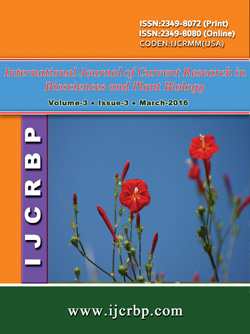 |
Online ISSN : 2349-8080 Issues : 12 per year Publisher : Excellent Publishers Email : editorinchiefijcrbp@gmail.com |
2Department of Horticulture, College of Agriculture, Central Agricultural University, Imphal – 795004, Manipur, India
Initial study was conducted on acridity free elephant foot yam (Amorphophallus campanulatus Roxb. Blume) cv. Gajendra intercropping with spice crops (ginger and turmeric) under sloppy foot hills of Imphal-East, Manipur for economic viability. Elephant foot yam (13.02 tha-1), turmeric (42.84 t ha-1) and ginger (36.51 t ha-1) were recorded highest yield as sole crops. Among the intercropped treatments maximum income per rupee investment (4.07), monetary equivalent ratio (0.78) and per day returns (2535.83 Rs ha-1) was recorded in elephant foot yam intercropped with double row of turmeric. The result indicating that among the intercropping treatments, elephant foot yam cv. Gajendra with double row of turmeric would be appropriate to harvest non-acridity corms for nutritional security coupled with profitable returns from turmeric under sloppy foot hills of Imphal-East.
